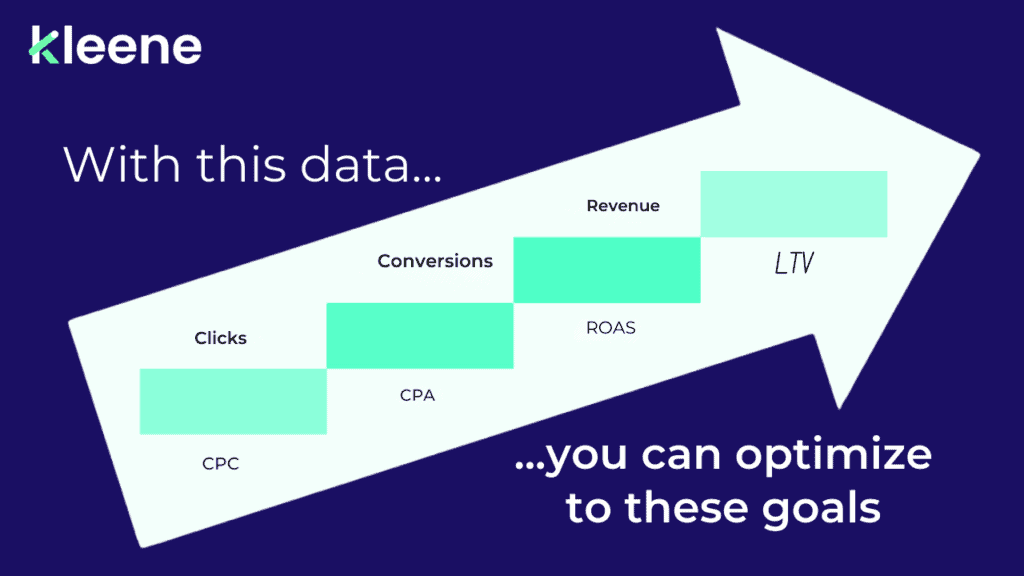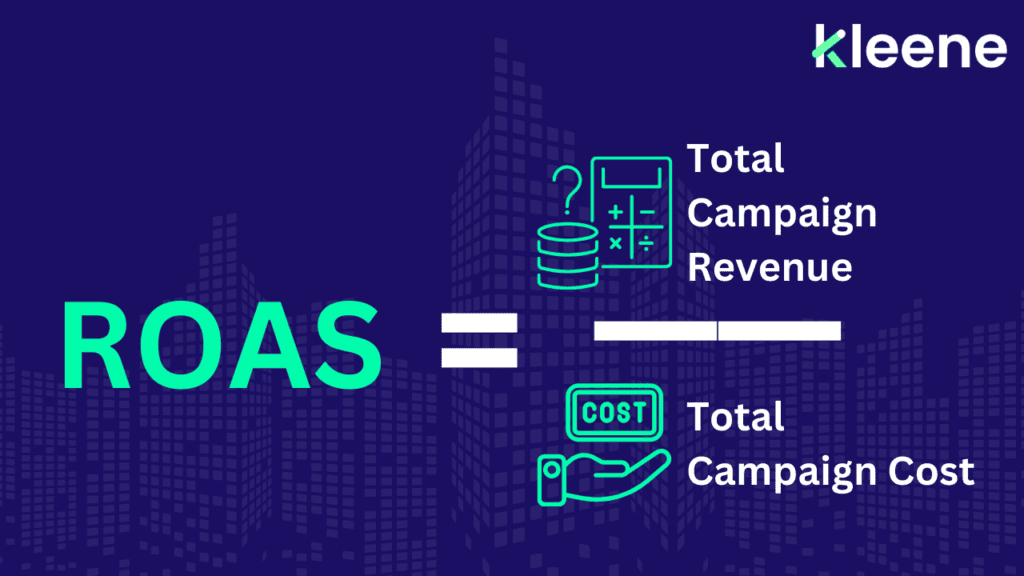Introduction: Understanding ROAS Marketing
In the fast-evolving world of ROAS marketing, mastering the art of calculating and interpreting Return on Advertising Spend is essential. ROAS marketing is more than just a buzzword—it’s a critical metric that helps businesses measure the effectiveness of their advertising campaigns. The term ROAS, or Return on Advertising Spend, represents the revenue generated for every pound spent on advertising. For businesses aiming to optimise their marketing investments, understanding and accurately calculating ROAS is key.
In today’s competitive landscape, relying on generic, black-box solutions for ROAS marketing can be problematic. These solutions often offer limited visibility and fail to provide the detailed insights needed to make informed decisions. Instead, companies should seek tailored tools that offer a comprehensive view of their advertising performance. This article delves into the nuances of ROAS marketing, highlighting the importance of using the right tools and strategies to maximise your advertising returns.
What Is ROAS in Marketing?
To fully grasp ROAS marketing, it’s crucial to understand the fundamental concept of ROAS. ROAS, or Return on Advertising Spend, measures the revenue generated for each pound spent on advertising. For example, if you spend £1,000 on ads and generate £5,000 in revenue, your ROAS is 5. This means that for every £1 spent on advertising, you earn £5 in revenue.
ROAS meaning in marketing is straightforward but vital for evaluating the success of your advertising campaigns. It provides a clear picture of how well your marketing dollars are working for you. However, to truly leverage ROAS, businesses need to look beyond the basic calculation and consider the broader context of their advertising strategies.
The Challenges of Black Box Solutions
One of the major challenges in ROAS marketing is the reliance on black-box solutions. These are often generic tools that offer limited insights and can obscure the true impact of your advertising efforts. Black-box solutions are characterised by their lack of transparency, making it difficult for businesses to understand how different factors contribute to their ROAS.
ROAS in marketing requires a more detailed approach. Without a full-channel measurement tool, companies are left with incomplete data, making it challenging to measure brand spending accurately and allocate resources effectively. This lack of visibility can lead to inefficient budget allocation and missed opportunities for optimisation.
The Importance of Tailored Measuring Tools
To overcome the limitations of black-box solutions, businesses need tailored measuring tools designed specifically for their needs. A bespoke tool provides a detailed view of how each marketing channel contributes to your overall ROAS. By offering granular insights, these tools help businesses understand the impact of their advertising spend across various channels.
A tailored ROAS measurement tool is crucial for several reasons:
- Accuracy: It provides precise data relevant to your specific business needs.
- Insight: It helps you understand the performance of each channel, enabling better resource allocation.
- Optimisation: It allows for more informed decisions about where to invest your marketing budget.

Full Channel Measurement: A Game Changer
A full-channel measurement tool is essential for any business serious about ROAS marketing. These tools offer a comprehensive view of how different marketing channels perform, including both online and offline touchpoints. This holistic view is critical for effective budget management and maximising your advertising ROI.
By using a full-channel measurement tool, businesses can:
- Track Performance: Monitor the effectiveness of each channel in real time.
- Allocate Resources: Distribute your budget based on channel performance data.
- Identify Trends: Spot trends and patterns that can inform future marketing strategies.
Without a full-channel measurement tool, businesses struggle to understand how their brand spending impacts overall performance. This lack of insight can lead to inefficient resource allocation and missed opportunities for optimisation.
Predictive Models: Enhancing Strategic Decisions
In ROAS marketing, it’s not sufficient to measure past performance. Predictive models play a crucial role in forecasting future outcomes and optimising marketing strategies. A robust marketing spend optimisation tool doesn’t just provide historical data; it also uses predictive models to forecast the impact of budget shifts on ROAS, CAC (Customer Acquisition Cost), and LTV (Customer Lifetime Value).

How predictive models enhance strategic decisions:
- Forecasting: Predict future performance based on historical data and current trends.
- Scenario Analysis: Assess the potential impact of different budget scenarios on your ROAS.
- Optimisation: Make data-driven decisions to allocate your budget more effectively.
By leveraging predictive models, businesses can anticipate the outcomes of various budget changes, allowing for more strategic allocation decisions. This forward-looking approach helps in optimising marketing spend for better results.
Accurate ROAS Prediction: The Role of Comprehensive Algorithms
Accurate ROAS calculation goes beyond basic metrics. To get a precise understanding of your advertising performance, you need a measuring tool that uses advanced algorithms to consider all touchpoints, both online and offline. These algorithms integrate data from multiple sources to provide a comprehensive view of how different factors contribute to your ROAS.
Key benefits of using advanced algorithms in ROAS prediction:
- Integration: Combine data from various touchpoints to get a complete picture.
- Precision: Enhance the accuracy of ROAS calculations with detailed data analysis.
- Insight: Gain a deeper understanding of how different factors affect your advertising performance.
A comprehensive approach ensures that all aspects of your advertising efforts are considered, leading to more accurate predictions and better decision-making.
How to Calculate ROAS in Digital Marketing
Calculating ROAS in digital marketing is a fundamental skill for any marketer. The basic formula is:

However, to get a more accurate picture, you should consider the broader context of your marketing efforts. This includes understanding the ROAS meaning in marketing in relation to your specific channels and strategies.
Steps to calculate ROAS in digital marketing:
- Gather Data: Collect data on revenue generated from your ads and the cost of those ads.
- Apply the Formula: Use the formula to calculate ROAS.
- Analyse Results: Interpret the results to understand the effectiveness of your advertising spend.
Advanced tools can help refine your ROAS calculations by incorporating various data points and touchpoints, providing a more accurate assessment of your digital marketing efforts.
Conclusion: Mastering ROAS Marketing
Mastering ROAS marketing requires more than just a basic understanding of the metric. It involves utilising the right tools and strategies to gain accurate, actionable insights. Moving away from black-box solutions and investing in tailored measurement tools can provide a clearer picture of your advertising effectiveness.
By using a full-channel measurement tool, leveraging predictive models, and applying advanced algorithms, you can optimise your marketing spend and achieve better returns on your investment. Understanding and accurately calculating ROAS is crucial for making informed decisions and driving better results for your business.
Next Steps for increasing ROAS
Integrating cutting-edge technological platforms, such as Kleene’s Decision Intelligence Platform, can make it easier for Chief Marketing Officers to implement Marketing Mix Modelling and ensure ROI.
By streamlining the implementation of Marketing Mix Modelling , our platform enables Marketing teams to access deeper insights more efficiently and effortlessly. This efficiency is achieved through:
- Comprehensive Data Integration: Our platform excels in aggregating a wide array of data sources, including sales, marketing, consumer behaviour analytics, finance, and logistics. This extensive integration facilitates a more thorough and accurate analysis.
- Holistic Campaign Analysis: The platform is adept at measuring the impact of both online and offline campaigns, ensuring a comprehensive view of marketing efforts. Enhanced Insights from Comprehensive Data: with the inclusion of diverse data sets, the platform provides richer insights, enabling more informed decision-making
- User-Friendly Interface: Kleene’s platform is designed with user experience in mind, allowing CMOs and their teams to navigate complex data analytics with ease. This simplifies the process of deriving actionable insights from MMM results.
- Exceptional Support and Expertise: Kleene partners with clients to ensure a significant return on investment and effective implementation of the platform, providing unparalleled support and expertise.
Contact a Kleene.ai data expert to learn more about how their Decision Intelligence Platform can help your company get a better ROAS
You may also like:
Return on Ad Spend: 10 Proven Strategies to Maximize
7 Powerful Tips on How to Work Out ROAS Accurately
ROAS Formula: 7 Effective Strategies to Amplify Your Advertising Returns
How to Calculate ROAS in 2024: A Comprehensive Guide to Maximising Your Return on Ad Spend
Frequently Asked Questions (FAQs) About ROAS Marketing
1. What is ROAS in marketing?
ROAS stands for Return on Advertising Spend. It measures the revenue generated for every pound spent on advertising. It’s a key metric for assessing the effectiveness of your advertising campaigns.
2. How do I calculate ROAS in digital marketing?
To calculate ROAS, divide the revenue generated from your ads by the cost of those ads. For example, if you spent £1,000 on ads and generated £5,000 in revenue, your ROAS would be 5.
3. Why is a full channel measurement tool important?
A full channel measurement tool provides a comprehensive view of how different marketing channels perform. It helps in accurately measuring brand spending and allocating resources more effectively.
4. How do predictive models help in ROAS marketing?
Predictive models use historical data to forecast the impact of budget changes on ROAS, CAC, and LTV. This enables you to make more strategic decisions about your marketing spend.
5. What is the role of algorithms in predicting ROAS?
Algorithms analyse data from multiple touchpoints to provide a more accurate prediction of ROAS. They integrate online and offline data to give a complete picture of your advertising performance.
6. Can black-box solutions be effective for ROAS marketing?
Black-box solutions often lack the detailed insights needed for accurate ROAS measurement. They can obscure the true impact of your advertising efforts and limit your ability to optimise your strategy.
7. What are the benefits of a tailored ROAS measurement tool?
A tailored ROAS measurement tool fits the specific needs of your business, providing detailed insights into how each marketing channel contributes to your overall ROAS. This helps in making more informed decisions and optimising your strategy.



